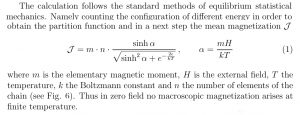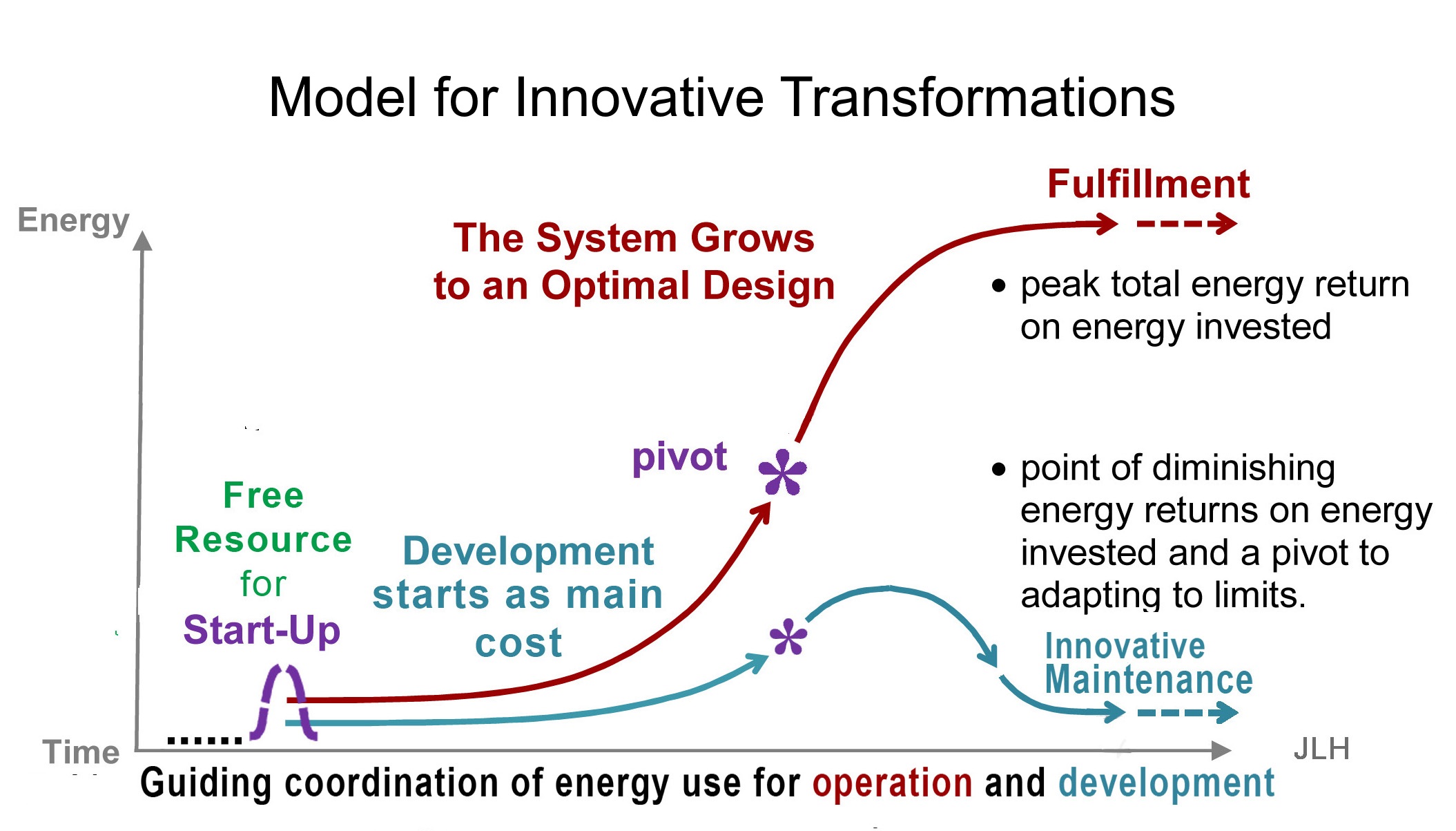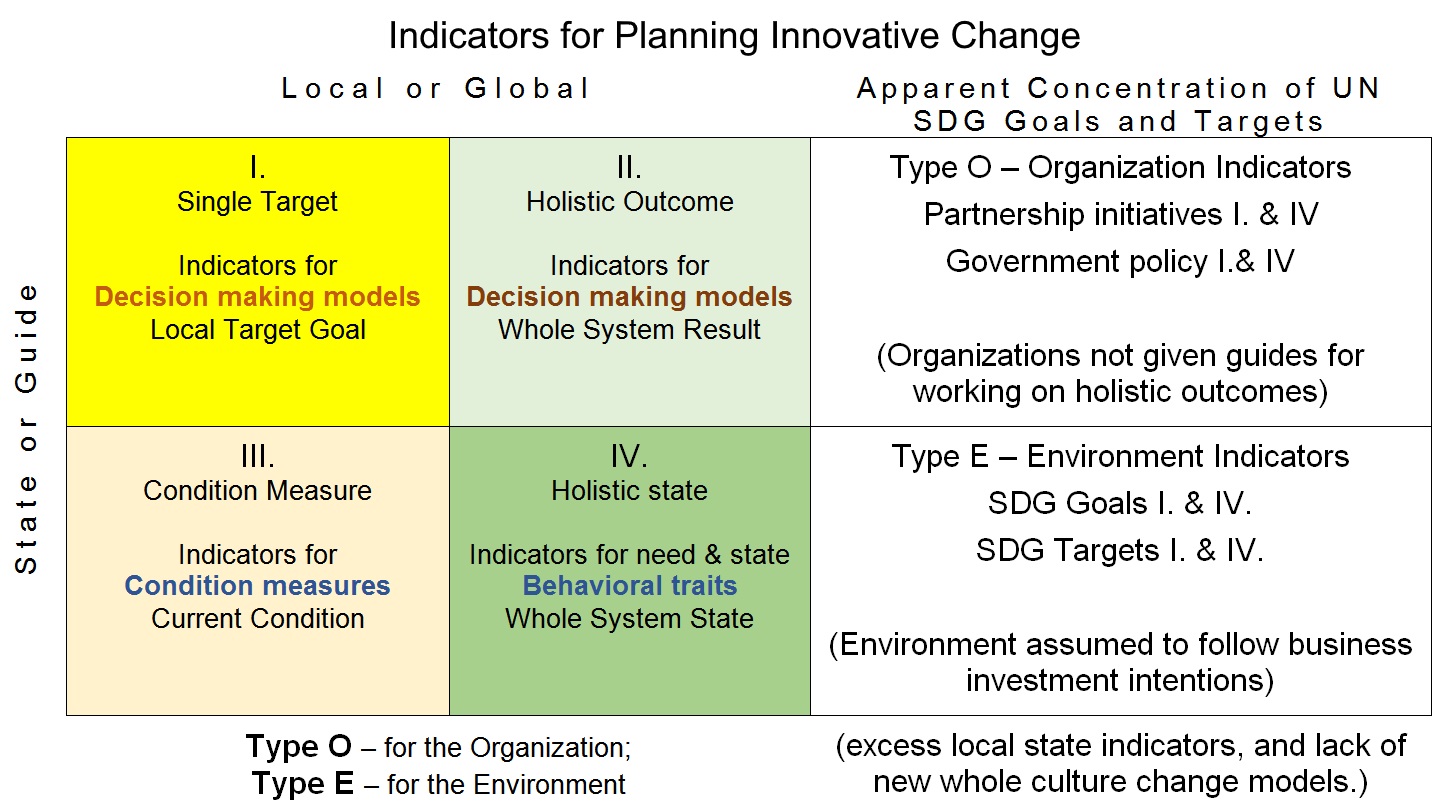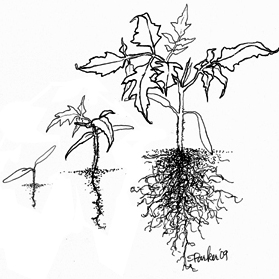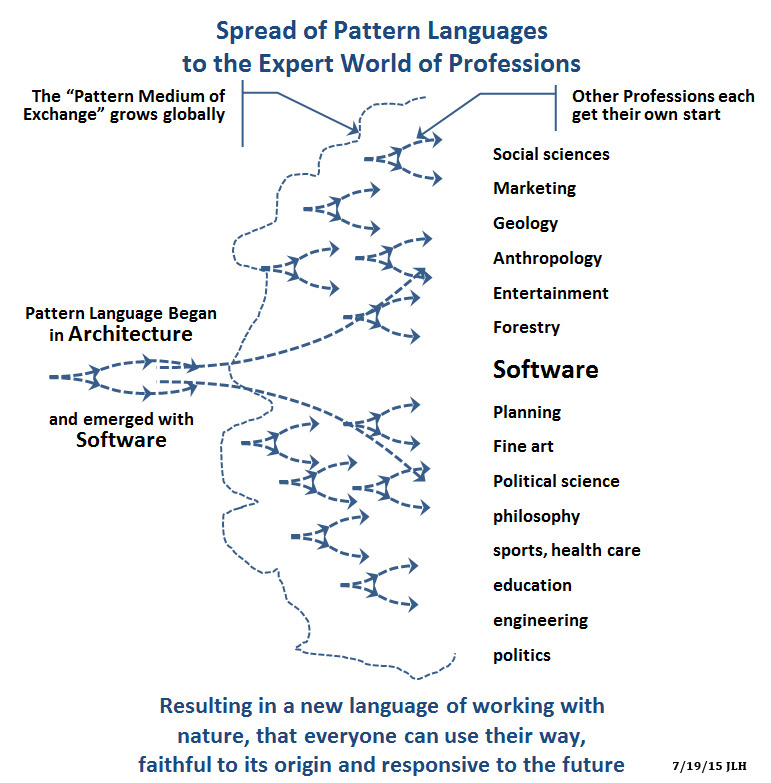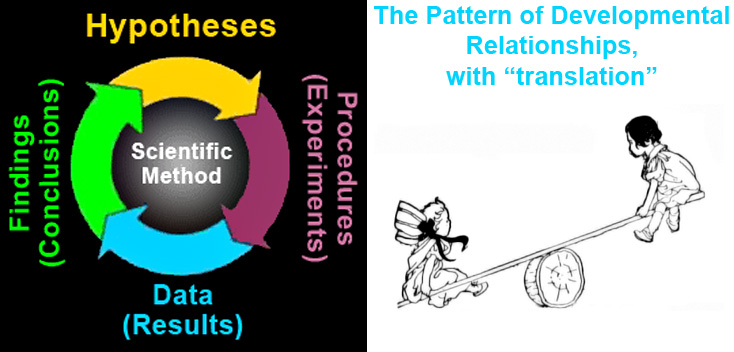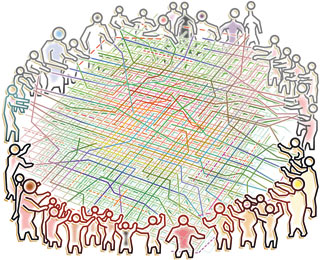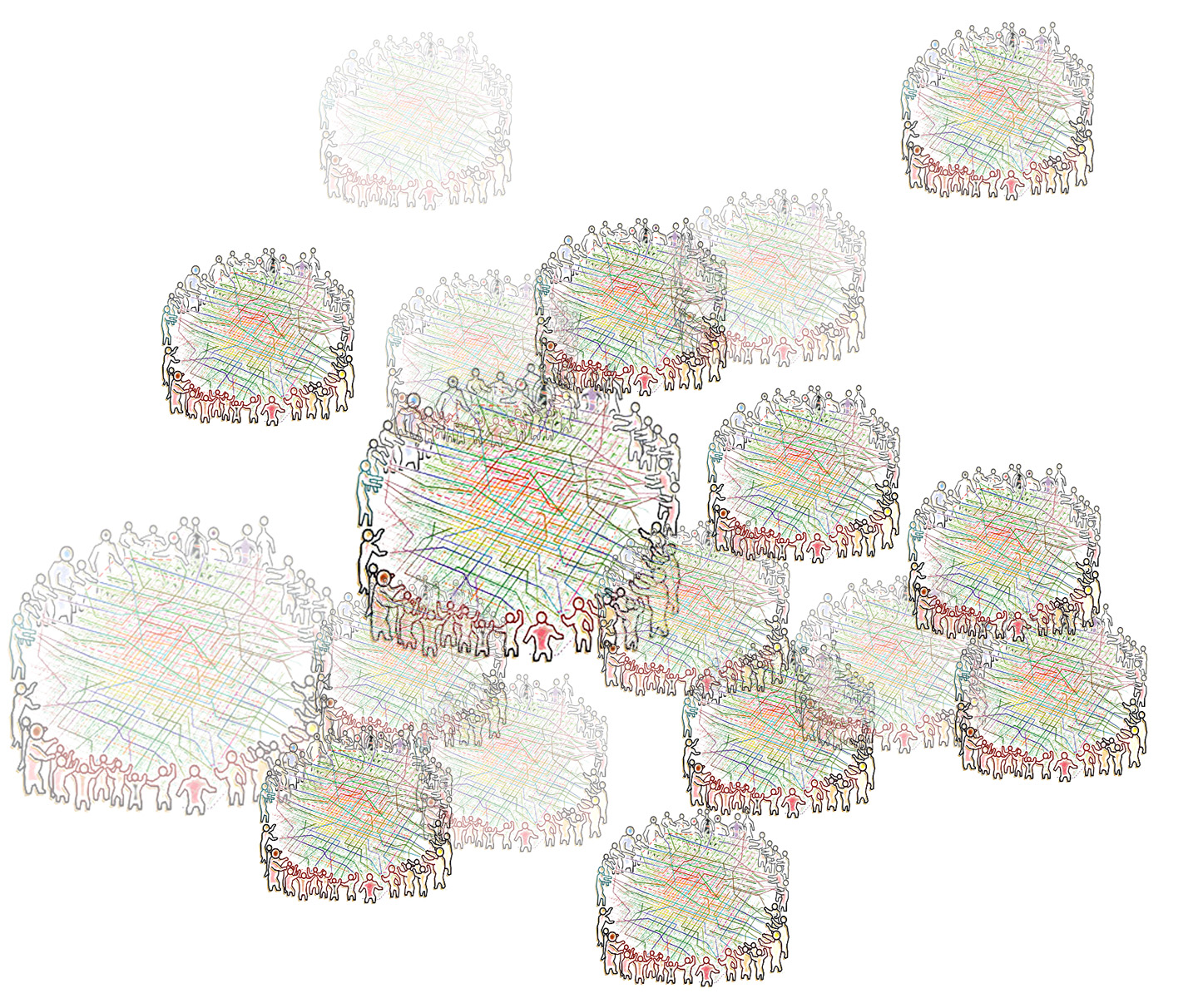_________________
“Natural growth” is nature’s way of creating long-lasting new lives, of all kinds.
Intro: How system responsiveness is expressed in natural growth is as anticipation of the opportunity to end growth by perfecting the emerging system. To do that, the system’s steering needs to switch from multiplying to harmonizing (i.e. maturing) its design and place in the world.
The figure below is something of a list of what to look for in any particular case. All systems emerge with compound growth and then variably navigate their futures. A talk on the core natural science for an ISSS forum on Oct 2, 2021, is on YouTube!; the research paper (1) below.
__________________
Throughout nature, living systems of all kinds develop by a growth process with three main stages. The first stage is an explosion of innovations in extracting and capturing resources from the new life’s environment, furiously building the new entity with what’s available. Varied examples include a seed sprouting, humans sprouting in the womb, the compound growth period of businesses, economies, and cultures. It also includes the take-off periods of new relationships and all other emerging organizational systems with lives of their own. The second stage follows the first, exploratory and adaptive maturation of a new life as it finds its place and purpose in life, creating its first niche in the world by a slowing process that perfects the emerging design, to be released to forage the greater world starting its longer third stage of life, building wider environmental relationships to last a lifetime.
Genuine “thriving through transition”* can be achieved throughout, from extractive innovation to adaptive maturation, and then finding and holding a niche in the future, even lasting into graceful decline. This storyline for how new lives develop is also found at every scale of macroscopic life of every kind, making it quite a wonder that it seems not yet studied in the sciences, nor part of our general cultural understanding … It’s so much a part of all our experiences our blindness to it is almost as if we’ve been looking the other away, not seeing how living systems work by themselves distracted by looking for something else. Perhaps we are always looking at nature only for how we can control things rather than for how nature works by itself.
A scientific research paper on the subject (1) was presented at the July 2021 meeting of the ISSS. What contributed to its success was focusing on how people already know a great deal about nurturing and guiding new lives of many kinds, initiating and supporting their growth and maturation up to their release. But, unfortunately, we do not talk about it much because it’s quite complex and is naturally intuitive for familiar creative work we mostly do non-verbally. So our discussion of it has lagged far behind. Just think about the difference between the start-up and finish-up stages of any kind of work, and how the work switches from multiplying the early patterns and then harmonizing them to achieve a truly lasting result.
For example, we follow much the same natural creative growth stages in making dinner. We start making dinner by first exploring what might be put together, at first taking small steps, then building up to large steps, and then back down to small steps again to climax with finishing touches as we sit down to eat. Raising a child or starting a business are far more complicated but follow the same creative, exploratory starting than perfecting stages to finish. Growth also faces numerous challenges along the way. If fortunate and skillful overcoming the challenges can be a thriving process all the way, taking a living system through its immature then maturing stages to serve its mature life.
The figure below is from the research paper, the composite diagram of the general growth stages of new lives, illustrating the A, B, Cs of new lives. Individual new lives will diverge from the simplest common thread of development for all new lives. Instead, each will build its own life, displaying considerable variation on the paths taken as it builds its own chain of developments, confronting its individual challenges along the way. Every new life will first build up from small to larger steps, though, and then build down from large to small steps again to finish. So the two sweeping curves are just for typifying the normal course of the progression, also called an ‘S’ curve. So the shape might as well be shown as an uneven staircase of minor and major challenges if that were not hard to draw and too specific to represent the general pattern.
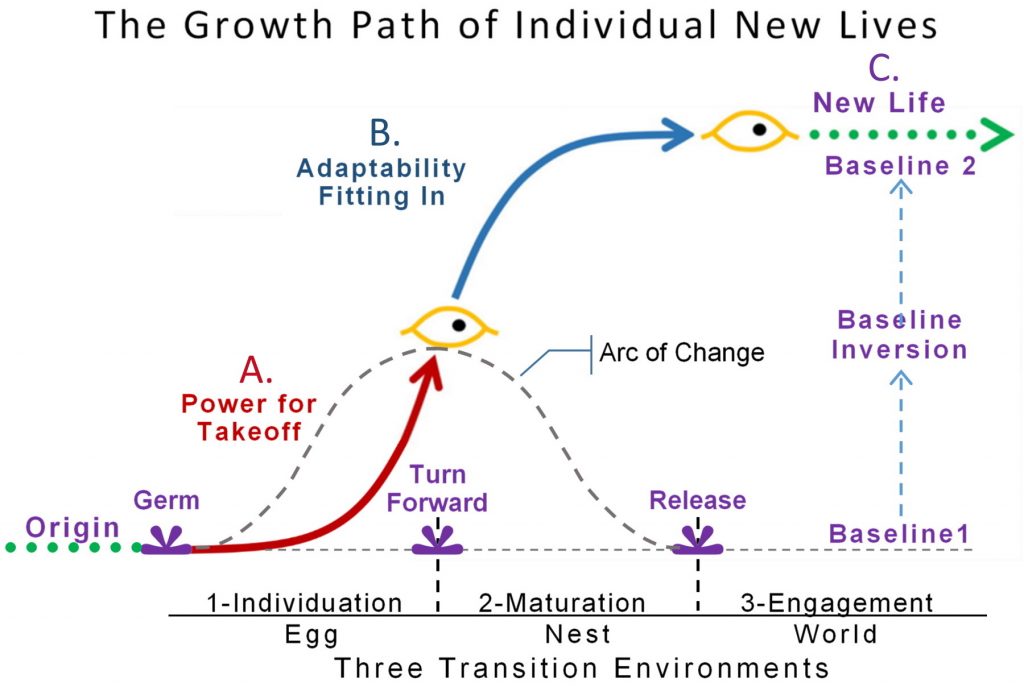
The best way of reading the figure might then be to imagine what thriving would be like for particular new lives making their way through the long series of challenges of ascending levels. Then to cement the generality of the pattern in your mind, think through the periods of struggle, thriving, approaching, and receding challenges for the largest scale, the new life of humanity we are building now! So far, its first stage of growth for modern civilization has been around 300 years long and is now facing an existential crisis for not knowing how to transition to maturity. That challenge is one of the things learning to verbalize the steps of growth can help with.
The most important growth challenge of any new life is the big one in the middle. That is the great challenge world society and the economy are having the most difficulty with. Having designed our world around making the first stage of growth endless is both the big barrier and the main cause of all of our multiplying world crises growing with growth (2), pushing growth too far and too accelerate too fast to coherently adapt to the most conclusive sign that growth is at its natural limits.
The natural path of escape is labeled “Turn Forward.” It’s the shift from focusing available resources on multiplying the initial concept to using them for perfecting our designs and finding ways to thrive in our new environment. That shift from thinking about the past to the future is what turns a new life away from multiplying its past to finding its future, discovering its greater purposes and roles in the wider environment. That is a very good kind of work, one that the whole world is abuzz with today, even though our institutional systems are totally unprepared for and dead set against. That’s why we most need to learn how to discuss the problem. Our institutional world is more built on talk than intuition.
The natural pace of change can also shift faster than it seems possible. Look at the figure and see how the “Turn Forward” corresponds to a “Baseline Inversion.” That is a whole-system shift in the direction of its change that can occur with almost no actual system change, an “inflection point.” Before that point, expansion of the system was in proportional steps of divergence from Baseline1. After the inflection point, expansion of the system develops by proportional steps of convergence toward Baseline2, to arrive at the end of physical growth at its new home where the new life becomes freed to be itself.
_________________________
Please do add comments to this article or email questions and comments to me at sy–at-synapse9-dot–com.
*Note: The phrase “thriving through transition” is from Trae Ashlie-Garen, expanded on here to apply to the full set of any of life’s transitions.
- Research Paper https://synapse9.com/drafts/2021-NewSci-IndividSys-MS.pdf
- Our growth crises https://synapse9.com/_r3ref/100CrisesTable.pdf
JLH

